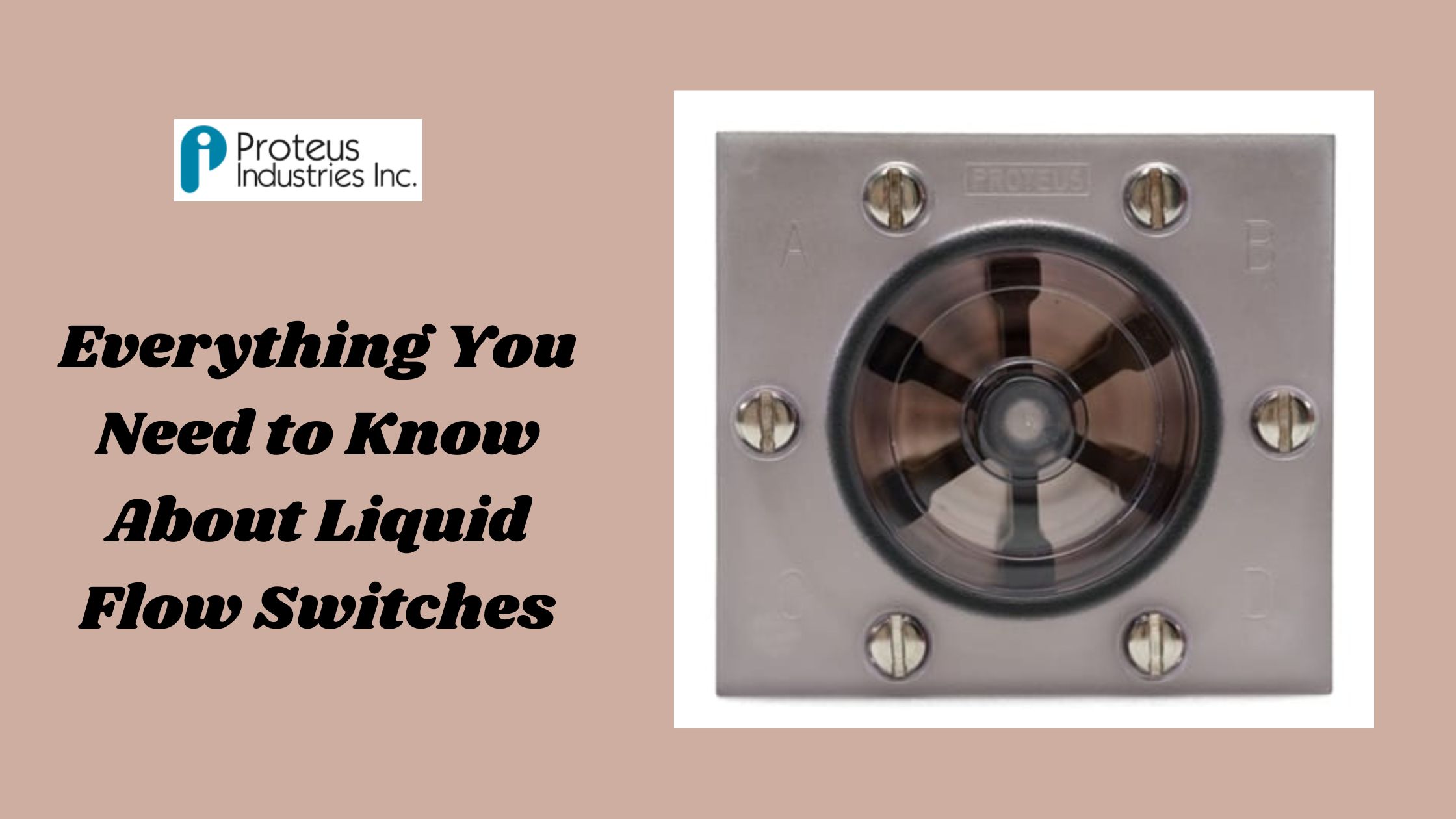Monitoring fluid movement is essential in industrial and commercial systems to ensure reliable performance and prevent unexpected failures. A liquid flow switch plays a vital role by automatically detecting changes in flow and triggering safety or control responses. From protecting pumps and heat exchangers to ensuring stable operation in HVAC, fire safety, and process applications, these devices have become indispensable. With automation, smart monitoring, and efficiency becoming priorities across industries, liquid flow switches now play a significant role in operational safety and precision control. This article explains what a liquid flow switch is, how it works, key components, types, applications, benefits, installation guidelines, maintenance, and troubleshooting tips.
What Is a Liquid Flow Switch?
A liquid flow switch is a device designed to detect the presence or absence, or changes in, liquid flow within a system. It acts as a safeguard that triggers alarms, activates pumps, or shuts down equipment when abnormal flow conditions occur. The core purpose of a liquid flow switch is to prevent equipment damage caused by issues such as dry running, blockages, leaks, or pump failure. These switches are widely used in HVAC, chemical processing, and fire protection. By continuously monitoring flow, they help maintain the system efficiency, improve safety, and reduce maintenance costs in both industrial and residential applications.
How Liquid Flow Switches Work?
A liquid flow switch operates by sensing movement within a pipeline and converting it into an electrical signal. Depending on its design, the switch may use a paddle, sensor, or thermal element to detect flow. When liquid moves through the system, it activates the sensor, which then sends a signal to pumps, controllers, or alarm systems. If the flow stops or drops below a set threshold, the switch triggers an automatic response to protect equipment. Electronic versions use advanced sensors for better accuracy, while mechanical types rely on paddle movement. This simple yet critical mechanism ensures continuous system protection and efficient operation.
Key Components of a Liquid Flow Switch
- Sensor or paddle – Detects liquid movement
- Actuation mechanism – Reed switch, relay, or electronic circuit
- Housing and ports – Protect internal components and connect to pipelines
- Wiring and calibration elements – Enable proper signal transmission
- Optional digital indicators or smart features – Provide real-time monitoring
Benefits of Using Liquid Flow Switches
Protects pumps and equipment
A liquid flow switch prevents pumps from running dry, detects blockages, and stops the system instantly, protecting motors, valves, and pipelines from overheating, damage, and costly failures.
Enhances operational safety
By monitoring real-time flow, the switch alerts operators to abnormal conditions, preventing hazards such as overheating, leaks, or system pressure failures, thereby ensuring safe and stable system operation.
Enables early fault detection
It identifies problems such as reduced flow, pump malfunctions, pipe blockages, or leaks early, enabling timely intervention before issues escalate into major system failures or shutdowns.
Improves energy efficiency
By ensuring pumps and equipment operate only under proper flow conditions, the switch reduces unnecessary energy consumption, optimises system performance, and prevents inefficient operation caused by low or no flow.
Reduces downtime
By detecting flow issues early and triggering protective responses, it prevents sudden breakdowns, minimises repair time, and keeps systems running smoothly with fewer interruptions or unexpected failures.
Supports automation
The switch integrates with automated control panels, PLCs, sensors, and alarms, enabling fully automated responses such as pump shutdowns, system adjustments, or emergency alerts without manual intervention.
Extends system lifespan
By preventing dry running, overheating, and mechanical stress, the flow switch reduces wear and tear on equipment, extending operational life and reducing costly replacements.
Choosing the Right Liquid Flow Switch
Required flow rate and sensitivity
Select a switch that supports the minimum and maximum flow rates of your system. Proper sensitivity ensures the switch activates accurately at the desired flow threshold for dependable performance.
Operating temperature and pressure
Ensure the switch is rated for your system’s temperature and pressure levels. High-pressure or high-temperature environments require durable materials and robust sensing mechanisms to ensure safe and accurate operation.
Environmental conditions: heat, vibration, moisture
Consider ambient conditions like extreme heat, humidity, or vibration. A durable housing and weather-resistant design are essential to maintaining accuracy and preventing premature failure in harsh environments.
Accuracy and response time
Choose a switch with the precision your system requires. Fast response times help detect flow changes immediately, preventing equipment damage and ensuring stable operation in sensitive applications.
Mechanical vs. electronic switch requirements
Mechanical switches suit basic applications with simple flow detection, while electronic versions offer higher accuracy, smart features, and better performance for advanced industrial or automated systems.
Electrical compatibility
Select a switch that matches your system’s voltage, wiring, and control panel requirements to ensure seamless integration, proper signalling, and safe electrical operation.
Installation Guidelines
- Install in a straight pipe section to avoid turbulence
- Ensure no immediate bends, valves, or air pockets
- Follow the recommended vertical or horizontal mounting
- Connect wiring carefully with proper grounding
- Perform initial calibration after installation
- Follow the manufacturer’s safety and setup instructions
Maintenance Best Practices
- Conduct routine inspections
- Clean sensors to prevent buildup
- Check the alignment of paddles or sensors
- Recalibrate periodically
- Verify electrical connections
- Replace damaged or worn components
Advanced Features of Modern Flow Switches
- Digital displays for real-time flow monitoring
- IoT connectivity for remote tracking
- Smart diagnostics for predictive maintenance
- Remote control integration
- High-precision electronics for demanding environments
Conclusion
A liquid flow switch is an essential component in modern fluid systems, ensuring safety, efficiency, and reliability across industries. By accurately detecting flow conditions, it protects equipment, supports automation, and helps maintain stable operations. Choosing the right switch, installing it properly, and following regular maintenance are key to maximising performance. Whether used in HVAC, industrial processes, or water systems, liquid flow switches remain critical for preventing failures and improving system longevity. Consulting experts ensures proper selection for specialised applications.


